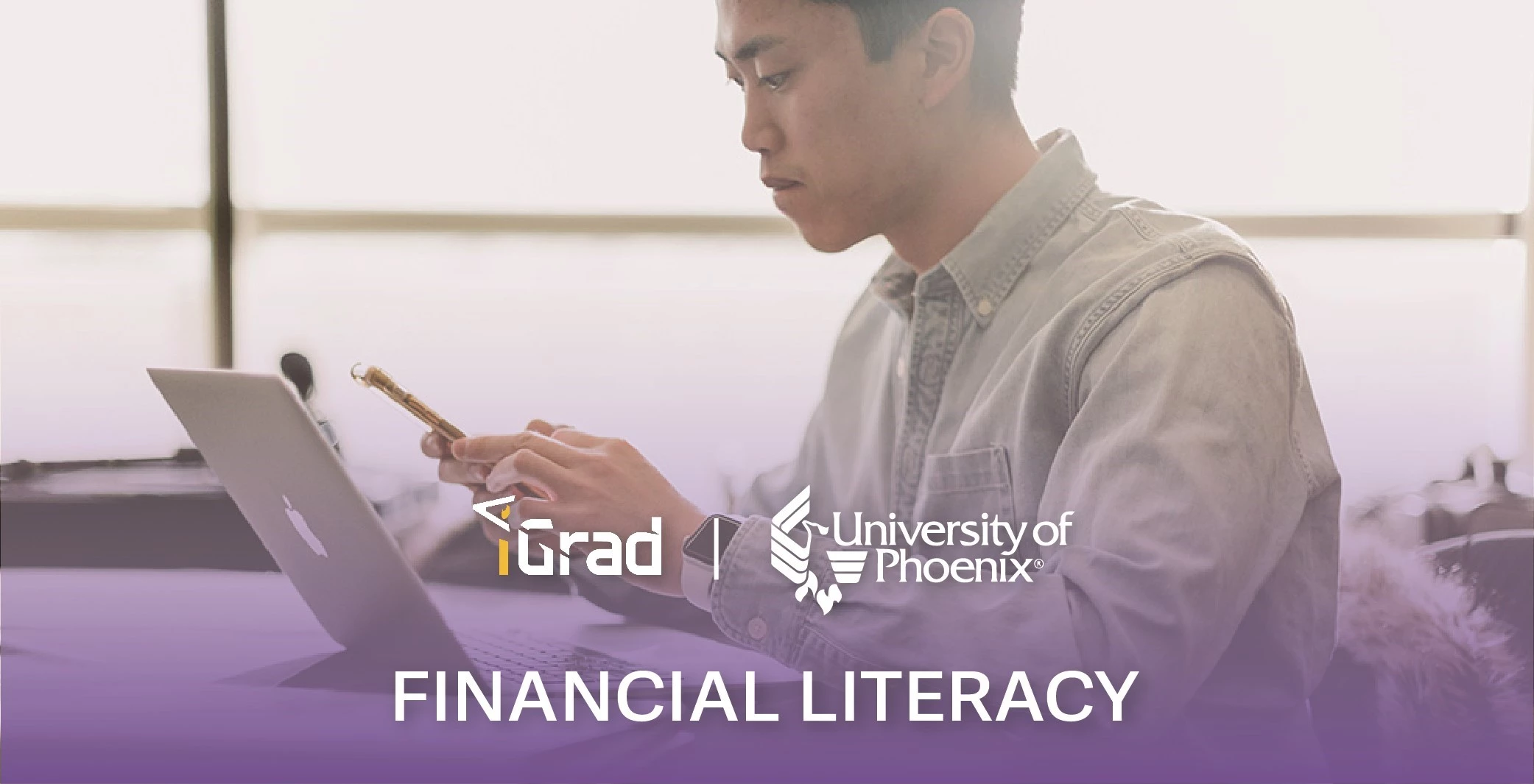A top-notch course outline can only go so far if students aren't actively involved – a point highlighted in a recent NYU study.1 According to the findings, students' engagement correlates with their perception of academic success.
The belief that increased participation leads to improved abilities and grades underscores the importance of encouraging student involvement, presenting a unique challenge for educators, especially in the realm of financial literacy.
Teaching money management is vital for students, but the subject is often viewed as dry and perplexing, even by adults who also may shy away from it.
Considering this, imagine the potential difficulty for students. It also emphasizes the importance of financial literacy programs.
Engagement in these programs revolves around capturing students' interest, and there are diverse strategies that higher-ed institutions and financial aid directors can employ. Making the topic less intimidating is key. One effective approach is incorporating tools that resonate with students.
Fortunately, we've compiled some practical tips to enhance student engagement. Let's take a look.
Understanding Student Perspectives
There's always a need to nurture financial literacy – and financial aid offices and educational institutions play a role in that. But first, they must see things from the students' point of view. Here are some key figures to note:
- In a survey of 30,000 students, 53% said they're prepared to manage their money.
- Only 17% of that population is confident about their financial education/knowledge.
- 35% in that same survey reported they've taken some sort of financial course in high school.2
- 1,550 out of 2,000 will have student loan debt after graduation.3
It's important to identify the barriers to participation. Knowing the reasons why students don't participate in financial literacy programs is key. Some students may find the subject matter dry, boring, or too complex. Others might struggle with time due to other school and life demands.
Once institutions know these challenges, financial aid offices can respond. This is where the two can join an initiative to create student-centric strategies. They can tailor programs to fit the attention span, interests, and maturity levels of different students.
Meanwhile, they can also stress how this knowledge could lead to smart borrowing. They can mention lower student loan default rates and overall student success, too, highlighting the benefits of financial education.
Gamification for Financial Education
How can we make financial learning not just relevant but enjoyable, too? Gamification could be the answer.
It's a creative tool that financial aid departments could use to capture student interest. It involves incorporating games and interactive challenges into the program to make the learning experience fun. Students will learn not only because they have to but because they want to.
The winning formula is making the game both informative and fun. Rewards and incentives are also crucial to motivate students. These incentives could come as badges, points, or certificates. The goal is to inspire learning and keep it sustainable. If done well, gamification could result in more student success.
Research even shows how beneficial this approach is.4 With it, students can:
- Hold a more positive attitude toward dealing with difficult topics
- Experience increased value and competence in cognitive tasks
- Sharpen their concentration
- Enjoy different forms of feedback
These techniques could include quizzes, puzzles, and role-playing games. Simulating decision-making scenarios related to money also engages students in financial learning.
Peer-to-Peer Mentorship Programs
Mentorship is another key element in many top college financial literacy programs. Peer-to-peer mentorship lets members enjoy the following:
- More student involvement
- Students can break down complex topics into simpler terms
- Improved confidence in handling personal finances
- Regular student loan counseling, guiding them through the process of borrowing
- Lower student loan delinquency rates as students become more responsible with finances
Over time, students get to break the stigma about the topic of money. In turn, they can even promote the discussion of money management.
Integrating Technology for Accessibility
Technology is now part of students' daily lives. Schools already incorporate it into their systems, but institutions can also make it part of a college-wide financial literacy program.
Online platforms, like iGrad, are excellent tools. These platforms give students access to interactive tools and calculators. As a result, students get to manage money in real-life scenarios.
With these tools, students get hands-on experience in managing finances. The same thing applies to loans – calculators let them see how interest can pile up if they don't manage their loans well.
While these apps provide mock scenarios, students can also use them for real-time updates on their actual money.
Collaborations with Student Organizations
Working together goes a long way, especially when it comes to financial literacy. Schools can partner with various student clubs and organizations in order to expand their reach.
These organizations can act as a bridge between financial aid offices and students. Here are some ways they can help improve the effectiveness of initiatives:
- Organizations can help spread the word about financial wellness programs.
- They can hold workshops and seminars about financial management.
- They can even coordinate "money management days" or "financial fitness weeks” on campus.
Effective collaboration is key in this process. Financial aid departments working hand-in-hand with student organizations can gain key insights into the unique needs of the students. This understanding enables more tailored program planning, resulting in a more impactful implementation.
- Consider some concrete examples of how this collaboration can manifest: Foreign students can benefit from learning sessions focused on currency exchange tailored to their specific needs.
- Seniors may find value in more comprehensive lessons on loan repayment and how some of their loan interest rates will be impacted by graduation.
By customizing initiatives, institutions can achieve tangible outcomes, such as lower student loan default rates and increased student engagement. These collaborative efforts pave the way for a more inclusive and effective approach to financial wellness within the student community.
Personalized Learning Paths
By recognizing the unique financial needs and aspirations of each student, educational institutions can craft programs that cater to individual goals. Customization not only enhances program relevance but also fosters greater engagement.
One effective strategy involves the utilization of digital adaptive learning platforms. These platforms aim to deliver a personalized educational experience to every student, adjusting to their preferred pace and learning style. For example, they can initiate learning with fundamental concepts and then progressively dive into more intricate aspects of financial management.
Resources for Diverse Backgrounds and Goals
Understanding financial topics can vary among students, depending on their backgrounds and goals. For students grappling with student loan debt, targeted counseling becomes crucial. In these cases, the significance of student loan entrance and exit counseling cannot be overstated, ensuring compliance with the Department of Education's standards.
On the other hand, students aspiring to establish their own businesses post-college may require a distinct guidance approach. By aligning programs with the specific goals of students, institutions increase the likelihood of active participation and success.
Metrics and Measurement of Success
While your efforts may positively impact students, it's equally as important to have a means of gauging their effectiveness. How can you prove whether or not your program is making a difference? The answer lies in utilizing key performance indicators, or KPIs.
These KPIs encompass various factors such as the number of students enrolling, the knowledge they acquire, and the shifts in their financial behavior. Additionally, examining student loan default rates and the reduction observed since implementing the program provides valuable insights.
Don't overlook the importance of collecting feedback. Suggestions from students can significantly contribute to refining your program. Embracing continuous improvement is integral to the journey, and valuable ideas often arise from those you aim to assist.
Another impactful strategy is sharing success stories and testimonials. These narratives serve as powerful testimonials for your programs, motivating more students to enroll and learn.
Keep Reading: 65 Ways to Measure Success: College Financial Literacy Programs
Start Your Initiative with iGrad
It's essential to recognize that improving financial literacy is an ongoing journey, not a one-time event. As you embark on this journey with students, the ultimate aim is to witness their financial intelligence grow.
Thankfully, you're just one step away from making this a reality. Schedule a demo with iGrad today or watch our video to learn more about our customized financial literacy programs.
2 - https://reports.collegepulse.com/financial-wellness
3 - https://everfi.com/wp-content/uploads/2019/05/MoneyMatters-2019.pdf








